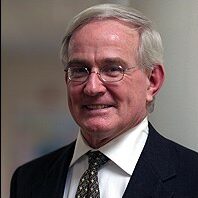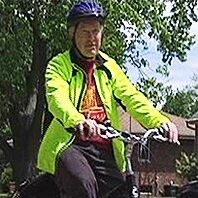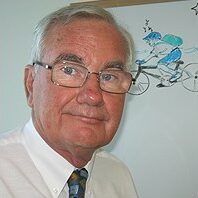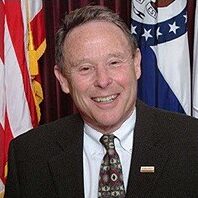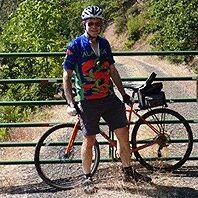Rail-Trail Champions
City of Philadelphia’s Sarah Clark Stuart Is the 2024 Rail-Trail Champion | Photo courtesy RTC
The trails, walking and biking movement is powered by passionate and steadfast individuals with tremendous vision and a lot of grit. In recognition of and gratitude for these dedicated individuals, the Doppelt Family Rail-Trail Champions Award honors those who have made significant contributions to the rail-trail movement through their work, volunteerism or support.
Each year since the program’s inception, Rails to Trails Conservancy (RTC) has honored an individual who has gone above and beyond in the name of trails. The award is bestowed in memory of long-time rail-trail philanthropist and advocate, Jeffrey L. Doppelt, who founded the program in 2011.
Stories About Champions
View More Blogs
Rail-Trail Champion Sarah Clark Stuart On Philadelphia’s Visionary Trail Network
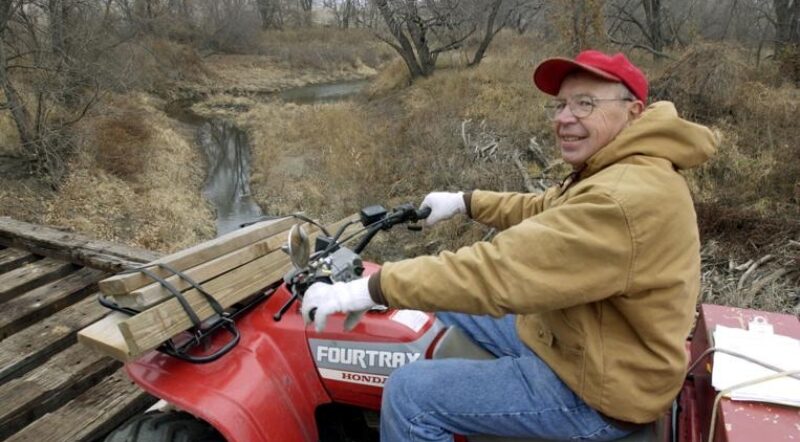
Nebraska Trails Visionary and Champion Lynn Lightner Passes Away, Age 90

A Year of Joy and Progress for Trails

Rail-Trail Champions are listed by most recent awardee. Tap image to learn more.
Sarah Clark Stuart
RTC has named Sarah Clark Stuart, trails and transportation manager in the City of Philadelphia Department of Streets, the 2024 Doppelt Family Rail-Trail Champion for her visionary leadership that has been central to the progress of the Circuit Trails, an 860-miles-plus regional trail network that serves Greater Philadelphia and South Jersey.
“For decades, Sarah’s leadership, ingenuity and determination have made it safer to walk and bike in Greater Philadelphia and South Jersey,” said Ryan Chao, president of RTC.
Washington Governor Jay Inslee
RTC has named Washington Gov. Jay Inslee the 2023 Doppelt Family Rail-Trail Champion for decades of leadership in accelerating trail development across the state, including his commitment to connecting the state’s trail system as a driver of economic and quality-of-life benefits for Washingtonians.

“For decades, Gov. Inslee has championed the role of trails in addressing significant challenges facing our communities—building climate resilience, generating economic development and delivering quality of life,” said RTC President Ryan Chao. “He has leveraged his position to raise the financial and political capital needed to unlock incredibly difficult projects that are transformative for the people they serve, the regions they connect and the entire nation. He is raising the bar for the country’s elected officials, while showcasing how integral trail and active transportation networks are in addressing the intertwined issues of climate change and our country’s economic future.”
Indiana State Rep. Carey Hamilton
RTC is pleased to announce that Indiana State Representative Carey Hamilton (D-87) has been named the 2022 Doppelt Family Rail-Trail Champion. The 41st Rail-Trail Champion to be inducted by RTC, Rep. Hamilton received the designation for her leadership in founding the Indiana Legislative Trails Caucus, an innovative model designed to create focus in the state legislature for accelerating investment and development of multiuse trails across the state.
Indiana Governor Eric J. Holcomb
Rails to Trails Conservancy has named Indiana Governor Eric J. Holcomb as the next Doppelt Family Rail-Trail Champion for his leadership in accelerating trail development across the state. Among his accomplishments is the Next Level Trails program, an innovative state funding program that RTC says could provide a model for other states looking to accelerate trail development nationwide. Gov. Holcomb is the 40th honoree and the first acting governor to be recognized as a Rail-Trail Champion.
Rep. Eleanor Holmes Norton (D-D.C.)
For her long-standing efforts to support trail networks in her native Washington, D.C., and across the United States, Rails to Trails Conservancy has named Rep. Eleanor Holmes Norton (D-D.C.) America’s 2020 Doppelt Family Rail-Trail Champion. Rep. Norton, a member of the U.S. House of Representatives’ Transportation and Infrastructure Committee and chair of its Highways and Transit Subcommittee, has been a major supporter of trails, walking and bicycling in Congress for decades, having consistently sought support for trail provisions in the transportation and infrastructure bills she’s led.
Among her most recent efforts is a bill passed by the House last summer, H.R. 2, the Moving Forward Act, which includes transformative funding for active transportation and investments in walking and bicycling trails, as well as the first-time inclusion of Active Transportation Connectivity Grants.
Keith Laughlin
Rails to Trails Conservancy was pleased to name former RTC President Keith Laughlin the 2019 Doppelt Family Rail-Trail Champion for his contributions to America’s trail networks over nearly two decades. Having retired from RTC in 2019 after nearly 18 years at the helm, Laughlin’s vision to create a nationwide network of trails has been central to the success of the rail-trail movement and RTC’s work to create healthier places for healthier people.
Laughlin came to RTC in 2001 after serving 22 years in the U.S. House of Representatives and the White House Council on Environmental Quality. His leadership focus on expanding support for trails, and protecting and growing federal trail funding, helped drive advocacy efforts leading to billions of dollars for communities through Transportation Enhancements (aka Transportation Alternatives)—the largest source of federal funding for trails, walking and bicycling in the United States.
His experiences in smart growth helped steer RTC’s focus toward communicating the powerful transportation, economic, health, environmental and social benefits of trails—and, in 2004, formally resulted in the integration into RTC’s mission statement of “build healthier places for healthier people”—language that continues to be a central driver in the movement. Laughlin also helped pave the way for another game-changing initiative: RTC’s national mapping program, which now documents more than 36,000 miles of multiuse trails accessed by more than 7 million people annually via TrailLink.com.
In the early 2010s, Laughlin posed a thesis: Connecting trails into a “whole network,” could help create benefits much greater than the sum of its parts. This thesis served as an impetus for the Route of the Badger, a regional trail network in southeastern Wisconsin envisioned by Laughlin, that spans more than 700-miles. Laughlin’s thesis is also a central theme in RTC’s larger TrailNation™ portfolio, which currently includes eight trail networks serving millions of Americans.
In January 2019, shortly before his retirement, Laughlin led the launch of the country’s most ambitious trail project ever—the 3,700-mile Great American Rail-Trail linking Washington, D.C., and Washington State. Connecting estimated 50 million people when complete, the project is a testament to Laughlin’s vision of building healthy, connected communities across the nation.
Peter Raynor

One of the most important moments in the history of the rail-trail movement happened behind the scenes, with little fanfare or notice, when National Park Service (NPS) staffer Peter Raynor drafted the 1983 Railbanking Act. With just two sentences, simple yet specific, he helped make thousands of miles of trails a reality by enabling railroad corridors to be “banked” for future use through interim use as trails.
Thirty-five years after its passing, more than 175 rail-trails have been made possible through the Railbanking Act. The list of railbanked trails accounts for nearly 20 percent of the country’s rail-trails—4,200+ miles of trail—and includes iconic and game-changing trails such as the Sauk Rail Trail in Iowa, Katy Trail State Park in Missouri and other well-known pathways.
After graduating from Cornell University law school, Raynor worked for two years at a New York law firm before moving to Washington, D.C. in 1971 and taking a job with the U.S. Department of the Interior. It was there, through NPS, that Raynor joined efforts, officially led by Rep. Phil Burton of California, to update the National Trails System Act (NTSA) of 1968 to better support the creation of National Scenic Trails.
During that time, Raynor noticed a piece of proposed language—one sentence—that expressed Congress’ support for creating trails from old transportation corridors such as rail lines, which were being abandoned in increasingly large numbers. Taking inspiration from other environmental policies, Raynor developed the idea of railbanking and put it down on paper, where it ultimately became the “good little law” that laid the legal foundation for thousands of rail-trails nationwide.
Despite the sweeping impact of his work, Raynor remains modest about his contribution. “Many people helped implement it [the law]. I just wrote it,” said Raynor. “This is a wonderful honor, not just for me, but for the entire environmental movement.”
Ross Greathouse and Lynn Lightner
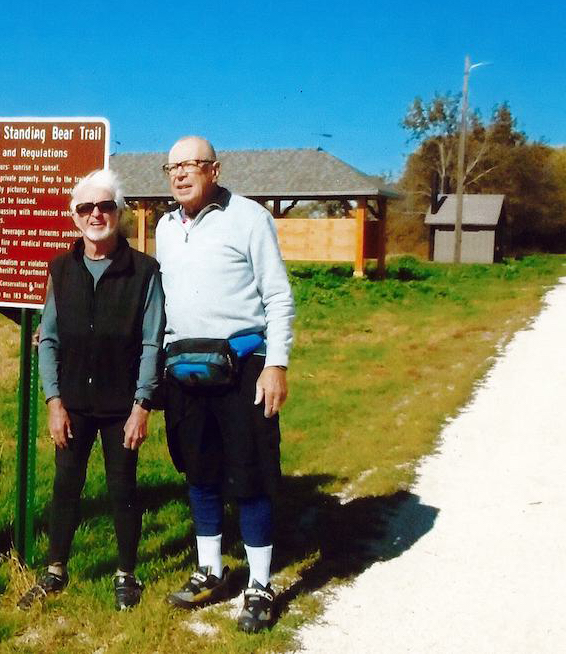
Ross Greathouse and the late Lynn Lightner (1934–2025) are credited as an instrumental team in developing and managing some of Nebraska’s most treasured pathways as well as major influences in the creation and evolution of the Nebraska Trails Foundation (NTF).
An interior designer (Greathouse) and engineer (Lightner) by trade, the men first became acquainted in the 1970s as members (and later presidents) of the Lincoln Track Club, which introduced them to trail advocacy. In 1984, Greathouse and a few dozen others formed the volunteer-based Nebraska Trails Council, which evolved into the nonprofit foundation in 1986 and, since its inception, has helped raise millions of dollars for trails.
In 1988, Lightner was one of 15 individuals to sign a promissory note for $167,000 to put toward the $275,000 purchase price for the MoPac Trail East—which now stretches 21.7 miles through Cass and Lancaster counties. In 1997, Greathouse raised $500,000 to buy and restore (under Lightner’s watch) the 1,714-foot Lied-Platte River Bridge, which crosses the river on a piece of the former Rock Island Line and connects to the 13-mile MoPac Trail through Springfield.
As a “career” highlight—both men point to the 22.9-mile Chief Standing Bear Trail, two decades in the making, which spans from Beatrice to the Nebraska-Kansas Border and memorializes the 1877 Ponca Trail of Tears. Greathouse helped raise $800,000 in 2000 to acquire the corridor for trail development—which was overseen by Lightner, who subsequently served as the trail’s manager until shortly before its completion. In 2017, 19.5 miles of trail were transferred to the Ponca Tribe of Nebraska in a formal ceremony.
Other individual and joint involvements include: the 8-mile Dark Island Trail (Central City to Marquette); the 13-mile Oak Creek Trail (Valparaiso to Brainard); and the 219.3-mile developing Cowboy Trail in northern Nebraska. In the past four decades, Greathouse has raised an estimated $2.5 million and Lightner has overseen the construction of 40 trail bridges.
When asked in 2018 upon their naming as Rail-Trail Champions, both men (as active cyclists and runners) credited the health benefits of trails as a motivating factor for their efforts. But it’s the strong, enduring friendship forged 40 years ago that arguably served as the true driving force. “We are such good friends, we’ve done so much together, and we continue to push and motivate each other today,” Greathouse stated.
Lightner passed away in January 2025 at the age of 90.
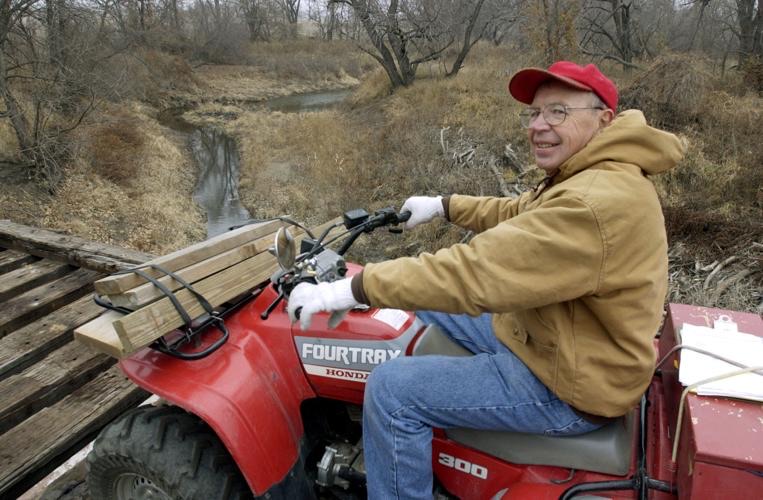
The Honorable Tom Petri
Over the past several decades, former U.S. Congressman Tom Petri has been one of the most influential public figures in generating and protecting federal support for trails and active transportation infrastructure in America.
Elected to the U.S. Senate in 1979, Rep. Petri represented Wisconsin’s Sixth Congressional District for 18 terms until his retirement in January 2015 (at the end of the 113th Congress). Known for his innovative and creative solutions to government problems, Rep. Petri would go on to make an impact in transportation, student loan reform, the federal highway program, cost sharing for federal water projects, tax and welfare reform, and health-care reform.
A lifelong cyclist and early supporter of the recreational trails movement, Petri helped lead a bi-partisan effort in the early 1990s to create the Recreational Trails Program (RTP), which was included in the federal surface transportation bill of 1991 (the Intermodal Surface Transportation Efficiency Act of 1991, or ISTEA). Working with both Democrat colleagues and RTC, he assisted in drafting environmental language for the bill that would allow flexibility in eligible uses for available funds. He would also go on to develop a close relationship with RTC in the mid-1990s and become a strong supporter of the active transportation movement.
“He was an emerging leader at that time in the trails movement and one of the most respected members of Congress” said Marianne Wesley Fowler, RTC’s senior strategist for policy advocacy and a longtime friend and colleague of the former congressman.
In 2003, after RTP and Transportation Enhancements (TE) (now known as Transportation Alternatives and the largest source of federal trail funding in the U.S.) came under attack in the House, Rep. Petri helped protect TE from elimination by offering an amendment to strike the provisions de-funding both programs. He also worked closely with RTC, Rep. James Oberstar (D-Minn.) and other trail supporters to secure the votes necessary to win the battle on the House floor. In a dramatic 327 to 90 victory, the RTP and TE were saved.
“That was a watershed moment,” quoted RTC President Keith Laughlin in the article, “From Preserving Rail-Trails to Creating Healthier Communities,” in the Spring/Summer 2016 issue of Rails to Trails. “It demonstrated the bipartisan support [the rail-trail movement] had in Congress and set the stage for our victories in the transportation bill in 2005.”
Rep. Petri continues to support trails as a member of RTC’s Board of Directors. His decades of service to the trail movement have been recognized by the American Hiking Society and the Coalition for Recreational Trails—the latter of which renamed its award program the “Tom Petri Annual Achievement Awards” in 2014.
Deb Hubsmith

Deb Hubsmith was a passionate, persistent champion of many advances the nation has seen in trails and bike/ped policy and practice over the past 20 years.
As leader of the Marin County Bicycle Coalition in California, which she helped found in 1998, Hubsmith worked with the late Congressman Jim Oberstar and other advocates to craft a legislation to advance walking and biking nationwide. Building on federal transportation legislation, she helped define several programs that would carry the bike/ped movement beyond the individual project stage to one of safe active-transportation systems for people of all ages and abilities.
In 2000, Hubsmith worked tirelessly to implement the Safe Routes to School Pilot Program in Marin County. Her dream to ensure a fully funded national program would be fulfilled in 2005 with passage of the Safe Routes to School Program in Congress’ SAFETEA-LU transportation legislation.
She was also vital to the passing that same year of the Nonmotorized Transportation Pilot Program (NTPP), for which Marin County served as one of four test communities, and helped form and serve on the NTPP working group charged with guiding the initiative to completion.
Hubsmith’s persistence and gifts in the field helped lead to the founding in 2005 of the Safe Routes to School National Partnership, for which she served as executive director for many years. Under her direction, the group evolved from an all-volunteer organization to a coalition with 30 staff across the country, a $3 million budget and more than 700 partners. Safe Routes to School programs now operate in all 50 states and Washington, D.C., and more than 15,000 schools have received federal funding for these programs.
Hubsmith passed away in August 2015 after a two-year battle with acute myeloid leukemia. “While Deb departed this earth far too young, she leaves a legacy that most humans could not hope to achieve in 100 years,” says Rails to Trails Conservancy President Keith Laughlin.
Marianne Wesley Fowler

Since joining the RTC team in 1988, Fowler has played an incredible role in the development and support of rail-trails across the country. As southern organizer in the late 1980s and early 1990s, she helped bring about the region’s first rail-trail networks, including the creation of the now-legendary Silver Comet/Chief Ladiga Trail and the early identification of the Atlanta BeltLine as a potential rail-with-trail in her 1991 “Abandoned Rail Corridor Assessment Report” of the Atlanta Metropolitan Area.
Later, as a leader of RTC’s policy advocacy team, she was pivotal in helping to protect hundreds of millions of dollars in federal funds for trails, and walking and biking infrastructure—having played an active part in the reauthorization of four federal transportation acts, including ISTEA, TEA-21, SAFETEA-LU and MAP-21—and was also key in the establishment of the Recreational Trails Program and the Safe Routes to School Program.
She has also been critical to protecting the federal railbanking statute, and served as a lead national organizer for the Nonmotorized Transportation Pilot Program (NTPP)—in which infrastructural improvements in four U.S. cities resulted in 85 million miles of active transportation as opposed to driving between 2009 and 2013.
“Marianne has been a stalwart leader of the rail-trail movement for more than 25 years. The results of her advocacy can be found in trails that are already enjoyed by millions, as well as in national policy that will make future trails possible,” said Keith Laughlin, president of RTC. “We’re proud to honor one of our own who has encouraged the spread of thousands of miles of trail across the landscape of America.”
In the 2014 Green Issue of Rails to Trails magazine, Fowler—RTC’s resident storyteller—talks about pinnacle moments in American rail-trail history, including the early days of the southern rail-trail movement, defending federal funds in Congress, and the creation and success of NTPP. As she shares her stories, her passion—never wavering in 25 years—is evident.
Fred Schaeffer

Fred Schaeffer of Poughkeepsie, N.Y. was named Doppelt Family Rail-Trail Champion for 2013, in recognition of his pivotal role in moving the Walkway Over the Hudson from an unlikely hope to a spectacular success.
Although there were a number of people who worked hard, and often behind the scenes, to bring the Walkway to fruition, Schaeffer was an enduring, vital presence throughout its development. When he first learned of the fledgling idea to convert the neglected Poughkeepsie-Highland Railroad Bridge into a public pathway, the plan was little more than a pipe dream. With many doubters and cynics looking on, Schaeffer proceeded to build a community of support, funders and believers for an ambitious project that he knew would one day be a tremendous asset for the region.
Supported by the nonprofit organization Walkway Over the Hudson, Schaeffer spearheaded the fundraising, advocacy and planning efforts that led to the opening of the Walkway in 2009, and its continued promotion as a regional and national attraction.
The Walkway Over the Hudson now attracts hundreds of thousands of users each year. In addition to boosting the region’s tourism economy, the Walkway has also been the catalyst for a booming health and wellness movement among locals who walk, jog or ride this spectacular rail-trail from sun up to sundown.
May Theilgaard Watts

May Theilgaard Watts was a writer, illustrator, naturalist, scientist and teacher. Her determination that Americans stay connected to their natural landscape in a time of increasing urbanization was the catalyst that led to the formation of the Illinois Prairie Path.
Watts’ vision of recycling out-of-service rail lines for recreational use was remarkable for being far ahead of its time. Heralded as one of the first successful rail-trail conversions in the United States, the Prairie Path laid the blueprint for thousands of rail-trails that would follow.
Inspired by the public footpaths of Britain, and the Appalachian Trail here in America, Watts believed Midwestern residents needed similar recreational corridors. Her 1963 letter to the editor of the Chicago Tribune implored, “If we have courage and foresight… we can create from this strip a proud resource.”
“We are human beings,” she wrote. “We are able to walk upright on two feet. We need a footpath. Right now there is a chance for Chicago and its suburbs to have a footpath, a long one.”
After eight years of contentious meetings between Watts and the towns of Wheaton and Glen Ellyn (which sought the right-of-way as valuable parking space), U.S. Secretary of the Interior Rogers C.B. Morton designated the Illinois Prairie Path as the second of 27 new National Recreation Trails. In the designation, Watts was honored “for her outstanding efforts toward establishment of the Illinois Prairie Path.”
The daughter of Danish immigrants, Watts grew up in Chicago. She would find her life’s calling in protecting and promoting nature. In addition to her work at the Morton Arboretum in Lisle, Ill., Watts authored several books and scientific studies that helped nonscientists interpret the landscape. Her 1957 Reading the Landscape was widely read and used by educators for decades. Watts described places ranging from backyard gardens to the Indiana Dunes and the Rocky Mountains. Her writing and her legacy remain loved and revered today, 36 years after her death.
WATTS’ 1963 CHICAGO TRIBUNE LETTER TO THE EDITOR
Dear Editor,
We are human beings. We are able to walk upright on two feet. We need a footpath. Right now there is a chance for Chicago and its suburbs to have a footpath, a long one. The right-of-way of the Aurora electric road lies waiting. If we have courage and foresight, such as made possible the Long Trail in Vermont and the Appalachian Trail from Maine to Georgia, and the network of public footpaths in Britain, then we can create from this strip a proud resource.
Look ahead some years into the future. Imagine yourself going for a walk on an autumn day. Choose some part of the famed Illinois footpath. Where the highway crosses it, you enter over a stile. The path lies ahead, curving around a hawthorn tree, then proceeding under the shade of a forest of sugar maple trees, dipping into a hollow with ferns, then skirting a thicket of wild plum, to straighten out for a long stretch of prairie, tall grass prairie, with big blue stem and blazing star and silphium and goldenrod.
You must go over a stile again, to cross a highway to another stile. This section is different.
The grass is cut and garden flowers bloom in great beds. This part, you may learn, is maintained by the Chicago Horticultural Society. Beyond the garden you enter a forest again, maintained by the Morton Arboretum. At its edge begins a long stretch of water with mud banks, maintained for water birds and waders, by the Chicago Ornithological Society. You notice an abundance of red-fruited shrubs. The birds have the Audubon Societies to thank for those. You rest on one of the stout benches provided by the Prairie Club, beside a thicket of wild crab apple trees planted by the Garden Club of Illinois.
Then you walk through prairie again. Four Boy Scouts pass. They are hiking the entire length of the trail. This fulfills a requirement for some merit badge. A troop of Scouts is planting acorns in a grove of cottonwood trees. Most of the time you find yourself in prairie or woodland of native Illinois plants. These stretches of trail need little or no upkeep. You come to one stretch, a long stretch, where nothing at all has been done. But university students are identifying and listing plants. The University of Chicago ecology department is in charge of this strip. They are watching to see what time and nature will do.
You catch occasional glimpses of bicycles flying past, along one side. The bicycles entered through a special stile admitting them to the bicycle strip. They cannot enter the path where you walk, but they can ride far and fast without being endangered by cars, and without endangering those who walk.
That is all in the future, the possible future. Right now the right-of-way lies waiting, and many hands are itching for it. Many bulldozers are drooling.
May Theilgaard Watts
Chicago Tribune
Sept. 25, 1963
David and Barbara Burwell

The history of RTC begins with David Burwell. When he and Peter Harnik founded RTC in 1986, there were just a few dozen rail-trails in the country. But during the 15 years he led the remarkable nonprofit he helped create, rail-trails became a much-loved part of the American landscape and an integral part of our recreation and transportation vernacular.
As a young man, Burwell was fortunate to have an excellent role model in trails advocacy. His mother, Barbara Burwell, championed the creation of the Shining Sea Bikeway in Massachusetts and worked for many years to see it to completion. Today, the 10.7-mile rail-trail runs from the ferry docks in Woods Hole to North Falmouth, Mass. The trail is a lasting legacy to Barbara, who passed away in March 2009.
A lawyer by training, David Burwell’s thorough knowledge of railbanking legislation and understanding of the role of the courts in advancing the development of rail-trails was a key to the continued success of RTC. During his 15 years as president, he helped make rail-trails an ingrained part of the American cultural landscape. In 1990, he was the founding co-chair of the Surface Transportation Policy Project (STPP), a national transportation policy reform coalition. He played a pivotal role in the passing of landmark federal laws to support trails and active transportation, which have resulted in hundreds of millions of dollars for the development and enhancement of rail-trails around the country. Later professional credits include leadership roles with STPP, NWF, the National Research Council Transportation and Sustainability Committee and the Energy and Climate Program at the Carnegie Endowment for International Peace. He passed away in February 2017, after a hard-fought battle with leukemia.
Peter Harnik

Peter Harnik’s name is inextricably connected with the formation of RTC. A self-described “bicycle enthusiast and cockeyed optimist,” Harnik’s first introduction to rail-trails came during a failed quest to close Wisconsin Avenue in Washington, D.C., to automobiles.
Still determined to build a landscape more open to cycling and walking, Harnik began researching Seattle’s Burke-Gilman Trail and the Elroy-Sparta State Trail in Wisconsin. His subsequent article for Environmental Action magazine, “I’ve Been Walking on the Railroad,” published in 1982, is one of the key treatises in the formation of a rail-trail movement in America.
Three years later, Harnik joined David Burwell in founding RTC. At that same time, he co-founded the Coalition for the Capital Crescent Trail.
Harnik spent 10 years as RTC program director and vice president for programs, during which he walked or biked 137 different rail-trails. He then left to become director of the Center for City Park Excellence at the Trust for Public Land (TPL). In that role and as a published author and speaker, Harnik continued to advocate for the benefits of trails and green spaces in large communities. His book “Urban Green: Innovative Parks for Resurgent Cities” featured a chapter on rail-trails, and a photo of New York’s High Line graced the cover.
After retiring from TPL, Harnik returned to his “first love” and spent five years researching the history of the railroad industry and the bicycle movement. The result was the book “From Rails to Trails” (University of Nebraska Press, 2021), the first comprehensive recounting of the story of the massive 19th-century growth of the U.S. rail network and the subsequent 20th and 21st centuries’ conversions of abandoned corridors to trails.
A documentary based on Harnik’s book is scheduled to be released on American Public Television in Fall 2025.
Harnik lives in Arlington, Virginia, with his wife and continues to be active in bicycle, trail and park advocacy, most recently coordinating the Coalition to Save the Trolley Trestle in Washington, D.C. The number of rail-trails he’s personally experienced has increased to 211.
Mark C. Ackelson
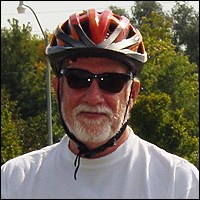
Mark Ackelson’s life has focused on protecting and restoring important natural, wildlife, recreational and cultural resource lands in his native Iowa. He has worked for the Iowa Natural Heritage Foundation (INHF) since 1980 and became president of this member-supported, statewide land trust in 1994.
The INHF has been instrumental in protecting more than 120,000 acres of Iowa’s wild places, including the conversion of more than 650 miles of former railroad corridors for conservation and recreation purposes.
Ackelson’s experience in Iowa soon led to a more national role in the promotion and development of rail-trails, including serving as chairman of RTC’s board of directors.
Ackelson was also a founder of the Land Trust Alliance, a national association of land trusts, and served as chair for three years. His experience in leading multi-regional efforts led to the creation of the Mississippi River Trail, Inc., which is creating a trail the length of the Mississippi River, involving 10 states
He helped secure Iowa’s trails and recreation future by creating the Resource Enhancement and Protection Program (REAP), providing $15 million to $20 million annually for conservation and recreation. Ackelson also helped establish the State Recreation Trail Fund and the Iowa Natural Resources and Outdoor Recreation Trust Fund.
David Brickley
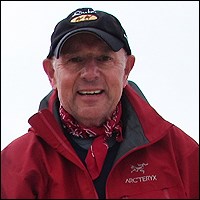
David Brickley is president of the September 11th National Memorial Trail Alliance, which is promoting the development of a 1,100-mile trail and greenway connecting the three memorial sites of the September 11, 2001, terrorist attacks on the United States: the Flight 93 National Memorial in Shanksville, Pa., the Pentagon Memorial and New York City’s National September 11 Memorial.
Under Brickley’s leadership as the director of the Virginia Department of Conservation and Recreation from 1998 to 2002, Virginia was awarded a National Gold Medal Award for the “Best Managed State Park System in America” from the National Recreation and Park Association. Brickley previously was an elected member of the Virginia House of Delegates from 1976 through 1998, and he was the legislative sponsor, co-founder and chairman of the Virginia Railway Express, Virginia’s commuter rail system. Brickley has also served as an officer and trustee of the East Coast Greenway Alliance, and as the Virginia State Committee Chair.
Brickley personally purchased a 16-mile out-of-service railroad corridor in King George County, Va., to protect it from being lost to development. As president of the Dahlgren Railroad Heritage Trail Alliance, his goal is to work with other volunteers to make this rail-trail project a part of the Potomac Heritage National Scenic Trail.
Brickley was born in Albany, N.Y., and graduated from Pennsylvania State University and the George Mason University School of Law. He previously served in the U.S. Air Force with a tour of duty in Vietnam, where he received the Bronze Star. He and his wife, Lori, reside in Woodbridge, Va., and have three children and four grandchildren.
Linda McKenna Boxx
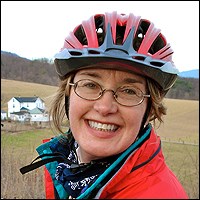
Linda Boxx has been the driving force behind the Allegheny Trail Alliance since its inception in 1995. She pulled several trail groups together so the most difficult sections of the trail—renamed the Great Allegheny Passage—could be completed to make the link from Pittsburgh to Cumberland, Md., and then connect to the C&O Canal Towpath. Over the years, Boxx has served as board president and volunteer executive director and raised more than $30 million for construction. In addition, she has helped with marketing the trail, as well as designing and managing the development of several missing links.
Boxx serves as chairman of the Katherine Mabis McKenna Foundation, based in Latrobe, Pa. She has also served on the boards of many other organizations and entities, including the Western Pennsylvania Conservancy, the Fallingwater Advisory Committee, Pennsylvania Pedalcycle and Pedestrian Advisory Committee, the Gettysburg Foundation and Saint Vincent College. She worked in state government in Pennsylvania from 1975 to 1978, and in Arkansas from 1978 to 1981, before returning to western Pennsylvania to work for the family foundation.
Boxx is a graduate of Bucknell University and has two sons.
The Honorable Tom Murphy
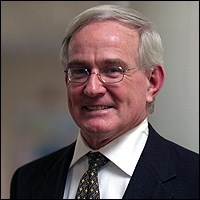
For more than 30 years, Tom Murphy has been a highly active and influential supporter of rail-trails. As an elected official, his promotion of trails and urban green space transformed the landscape of Pittsburgh and helped make Pennsylvania one of the nation’s most trail-friendly states.
From 1979 through 1993, Murphy served eight terms in the Pennsylvania State General Assembly House of Representatives. The legislation Murphy authored during this time to encourage industrial land reuse and transform unused railroad rights-of-way into trails and green space went a long way toward building a sustainable economy around trails tourism and outdoor recreation.
Murphy led the passage of the Pennsylvania Rail Trail Act in 1989, as well as the state’s purchase of what is now the 61-mile Pine Creek Rail Trail. He went on to serve three terms as mayor of Pittsburgh from 1994 to 2005, during which he oversaw the development of more than 20 miles of new riverfront trails and urban green space, and developed strategic partnerships to transform more than 1,000 acres of blighted, unused industrial properties into new commercial, residential, retail and public uses.
Murphy’s legacy in Pittsburgh is evident today in the Three Rivers Heritage Trail System, which attracts thousands of users each day.
“Tom understood what trails and biking could do for the city, at a time when nobody was talking about it,” says Tom Sexton, RTC’s northeast regional director. “Beyond his role in Pittsburgh, Tom was a cheerleader for trails throughout the southwest part of the state. Now that we have all these great trails, people forget there was a time when people weren’t interested in this stuff. But Tom was a visionary; he was out on the stump.”
George M. Burrier Jr.
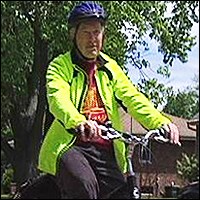
George Burrier was born in Chicago, Ill., but spent most of his childhood in Pennsylvania. He received a B.S. in psychology from Northern Illinois University in 1967, after which he spent four years serving in the U.S. Army in Vietnam. In 1973, he earned his law degree as an evening student while working for Pullman, Inc.
In the early-mid 1980s, William Rutherford, former director of the Illinois Department of Natural Resources (IDNR), flew Burrier over the abandoned Peoria, Rock Island & Pacific Railroad (where rail traffic had ceased in 1963). Rutherford asked Burrier to help make his trail plan come true. The Forest Park Foundation, directed by Rutherford, acquired the line in 1965 and the IDNR received the land in 1968. It became a state park in 1973—after which a 17-year battle commenced to develop the now 35-mile Rock Island Trail State Park.
Working with an initial annual state budget of $1 a year, Burrier and other volunteers began piecing together the trail, from restoring bridges and acquiring former railroad depots along the route to finding donors and new supporters for the project. Burrier provided legal work pro bono throughout the process, helping the friends group negotiate through local landowner and political opposition. Finally, on May 12, 1990, Secretary of State Jim Edgar officially dedicated the trail.
Burrier and his family began their cycling adventures in 1983 by going on a six-day ride from Fish Creek to Milwaukee in Wisconsin. Since then, the Burriers have traveled by bike countless times throughout the U.S. and internationally.
The Honorable Ray LaHood

A former congressman as well as the former U.S. Secretary of Transportation, Ray LaHood is a vigorous champion of rail-trails and one of the most high profile figures in the American political effort to retain and grow funding for non-motorized transportation.
Also a former high school teacher, LaHood’s great affection for trails was born from many hours spent in Rock Island Trail State Park in his hometown of Peoria, Ill. He became a staunch supporter of rail-trail programs during a critical time for transportation funding; his impassioned speech before Congress in 2003 defending the federal Transportation Enhancement program earned him great respect from active-transportation advocates and is one of the most well-known public statements in defense of trails, walking and bicycling.
“I know it is probably not fashionable for me to be up here talking in favor of this amendment, but I feel strongly about it,” he said. “If we really want Americans to be fit and healthy and get in good shape, the way to do it is to allow for the enhancement program that has worked so well, that allows people to get outdoors, to ride their bikes, to jog, to walk. What better way to bring people in a community together?”
As Secretary of Transportation, LaHood continued to stress the importance of non-motorized modes in transportation planning. Under his guidance, the U.S. Department of Transportation launched the extremely popular Transportation Investment Generating Economic Recovery (TIGER) program to fund transportation projects—including trails, walking or bicycling—that make communities more livable and sustainable.
Marianne Wesley Fowler, RTC’s senior strategist for policy advocacy, credits LaHood for long championing active transportation and the Transportation Enhancement program, despite significant political pressure. “Secretary LaHood was very much a leader of the movement, rather than a follower,” she affirms.
Supervisor Greg Cox

The rail-trail movement is fortunate to have a number of active supporters in positions of municipal leadership—men and women well placed to convert an understanding of the benefits of trails and active transportation into actual projects and programs. Greg Cox is one such champion.
With a career in public service that began as a high school teacher, Cox went on to serve two terms as mayor of Chula Vista, Calif., in the 1980s. He has served as a member of the San Diego County Board of Supervisors since 1995, overseeing a regional government providing services for more than 3 million people.
Thanks in large part to Cox, Chula Vista is a community with plenty of options for getting around. During his time as mayor, Cox led a groundbreaking regional effort to build a 24-mile, class I bike path looping around San Diego Bay. Today, the Bayshore Bikeway connects five city jurisdictions and a number of parks and recreation facilities. Due to its stunning coastline setting and urban accessibility, the Bayshore Bikeway is a nationally renowned rail-trail often held up as an example of trails that serve a wide cross-section of the community.
As president of the California State Association of Counties and the League of California Cities, Cox brought together a bipartisan coalition to consider active transportation as an integral component of smart growth. He continues to advocate for Complete Streets projects and is respected by his peers and the public for his championing of the Safe Routes to School program.
Supervisor Steve Kinsey

Steve Kinsey is widely known and respected for his successful efforts to increase non-motorized mobility in the San Francisco Bay area. Having served on the Marin County Board of Supervisors since 1996, Kinsey’s impact on the region is evident in a regionally connected bicycle network, a nationally recognized Safe Routes to School program and a countywide Complete Streets policy. He helped get bike racks on all local buses, video stoplight triggers at major biking intersections, and bicycle and pedestrian master plans in every Marin County community.
In a district defined by its beautiful coastal parks, active family farms and distinct, compact neighborhoods, Kinsey’s service for the county and the Bay Area Ridge Trail Board of Directors has helped close critical gaps in Marin County’s multi-use trail system.
His knowledge of the local landscape goes far beyond a familiarity with maps and blueprints. In 2007, Kinsey spent seven days backpacking, biking and canoeing around his sprawling district to celebrate its beauty and diversity.
Dr. Linda B. Crider

Dr. Linda Crider describes her advocacy of bicycling and trails as “one of her life’s passions.” From bicycling education programs in her native Florida to transportation planning in a remote Alaskan village, Crider’s promotion of active transportation has spanned a number of decades and many landscapes.
Crider’s involvement in Florida’s trails and cycling community began in the 1970s, first during her work in the governor’s office, and then as an active member of RTC’s Florida Chapter (and later an RTC Florida advisory board member).
Crider was a founding board member of the Florida Bicycle Association in the 1980s. She later founded and served as executive director for Bike Florida, Inc., and for 18 years was director of the University of Florida’s Bicycle and Traffic Safety Education Program. She directed a number of multi-modal research efforts and training programs for the Florida Department of Transportation, helping to make bicycling and walking safer and a more integral part of communities.
In 1997, Crider launched one of the nation’s first Safe Routes to School programs. In 2009, she was contracted to shape a plan to address the needs and opportunities for non-motorized transportation in the Prince William Sound region of Alaska, where she had spent a number of summers earlier in the decade. During Crider’s time there in 2009, she helped the city of Cordova develop a Safe Routes to School program, and her work led to the nomination of the Copper River Highway as a Scenic Byway.
In 2008, the national Association of Pedestrian and Bicycle Professionals recognized Crider with a Lifetime Achievement award.
Brian Smith

In his four decades in urban and regional planning, Brian Smith has witnessed firsthand the evolution of the role of trails in communities. During this time, planning professionals began to move the transportation focus away from traditional highway systems and toward bike and pedestrian facilities, a progression Smith refers to as a “maturing of the transportation system.”
Combining his planning focus with an energetic service spirit, Smith was instrumental in the creation and expansion of the Fred Marquis Pinellas Trail, one of Florida’s most popular and unique urban pathways—and a member of the Rail-Trail Hall of Fame. Connecting the cities of St. Petersburg and Tarpon Springs on Florida’s Gulf Coast, the Pinellas Trail is a marvel of non-motorized urban connectivity in a state where such pathways are rare and sorely needed. Its success as a recreational facility and transportation corridor has made it a model for urban pathways across the nation, and it helped jumpstart the rail-trail movement in Florida.
In 2011, Smith retired his long-time positions of planning director for Pinellas County and executive director of the Pinellas County MPO.
Smith’s experience with the Pinellas Trail and in planning at the regional level has made him a valuable member of the broader trails, pedestrian and bike community. He is nationally recognized as a generous technical resource for others planning trail and active-transportation projects, and as a passionate and knowledgeable advocate of urban pathways.
Joshua David and Robert Hammond

Since opening in 2009, the High Line—a pedestrian greenway and linear park built along a former elevated railbed in Manhattan—has become a game changer in the world of urban trails and community-driven adaptive reuse. It is enormously popular with both residents and visitors and has driven the re-energizing of a commercially stagnant area in Manhattan’s west side.
Without the foresight and advocacy of Robert Hammond and Joshua David, there would be no High Line. Hammond and David founded Friends of the High Line in 1999, inspired at first by a desire to save the unique trestle structure from demolition and later by the enormous possibility they saw in an elevated public greenway.
Before the High Line entered their lives, neither man had direct experience in anything resembling trails planning and management, or public projects of this magnitude. Hammond helped start several businesses and consulted with nonprofit organizations. A self-taught artist, he served as an ex-officio member of the Metropolitan Museum of Art’s Board of Trustees from 2002 to 2005. Before co-founding Friends of the High Line, David worked as a freelance magazine writer and editor for several publications, including Gourmet, Fortune, Travel + Leisure and Wallpaper.
Friends of the High Line has raised more than $180 million in public and private funding and now manages the park under a licensing agreement with the New York City Department of Parks & Recreation. Civic and professional groups worldwide have recognized Hammond and David’s work on behalf of the project.
Robert P. Thomas

Robert “Bob” Thomas is a widely recognized advocate for rail-trails and livable communities in his home state of Pennsylvania.
He is a long-time member and former president of the Bicycle Coalition of Greater Philadelphia, where he has contributed decades of efforts to develop a seamless network of bicycle transportation in Pennsylvania’s southeast region.
He is also a long-time member and former chairman of the board of the Schuylkill River Greenway Association, developer of major portions of the Schuylkill River Trail in southeast Pennsylvania, one of America’s most popular urban rail-trails.
As an architect, Thomas has focused on bringing the principles of conservation, preservation, greenways and active transportation into his work since 1969. A founding partner of Campbell Thomas & Co Architects, he has led the firm’s work in the advocacy, planning, design and construction of numerous rail-trails and greenways.
Thomas is also a member of the East Coast Greenway, where he serves on the Pennsylvania Steering Committee.
David Dionne

David Dionne is a former executive director of Red Mountain Park in Birmingham, Ala. Prior to joining Red Mountain Park, Dionne served as chief of trails and natural areas for Anne Arundel County in Maryland. He was selected to be the first park superintendent of the Baltimore & Annapolis Trail Park in 1987 and developed a park operations plan that included many innovative volunteer initiatives, trail operations practices and policies, and community-building programs. His programs and practices have been recognized nationally and internationally as models for trail operation and safety.
Dionne has been appointed to serve on a number of national committees and panels. In 1997, he was asked to be a member of the White House Millennium Council’s Green Ribbon Panel on trails, where he helped set up the Millennium Trails Program. In 1999, he became a member of the National Endowment for the Arts Committee for Art on Millennium Trails. From 2001 to 2005, Dionne was chairman of the National Board of Trustees for the East Coast Greenway Alliance, a nonprofit working to link local trail projects between Maine and Florida into a continuous 2,900-mile route. In 2005, Dionne was appointed by Governor Robert Ehrlich Jr. to be the chairman of the Maryland Bicycle and Pedestrian Advisory Committee, of which he served until 2007.
Dionne has been a featured or keynote speaker at park and trail conferences more than 50 times throughout the county. He now lives in Hoover, Ala., with his two children, Natalie and Cameron.
Ed McBrayer

Ed McBrayer is a native Georgian and an Aerospace Engineering graduate from the Georgia Institute of Technology. He worked on the NASA Skylab space program in support of the astronauts as a systems engineer in charge of stowage management. In the early 1970s, McBrayer built his own home; he enjoyed it so much he quit his job in aerospace and ultimately built more than 1,000 new homes in the Denver, Colo., area, where he became an avid recreational cyclist.
As chairman of the planning commission for the city of Englewood, Colo., McBrayer helped plan trails along the South Platte River through Englewood to promote alternative modes of transportation and recreational cycling.
In 1991, he returned to Atlanta to find no trails, no bike lanes, no bike routes and very few sidewalks. So when the Olympics were awarded to Atlanta, McBrayer and two of his friends reasoned that in order for Atlanta to be a “world-class city,” provisions for bike riding and pedestrian travel were a must. He helped form the PATH Foundation with a mission to build a network of off-road trails for use during and after the Olympics.
A year later, McBrayer helped the Georgia Department of Transportation organize the Transportation Enhancement (TE) Advisory Committee to help prioritize TE projects in Georgia.
With the help of many supporters, PATH built more than 20 miles of trails in time for the Olympics. Now more than two decades later, PATH has raised millions of dollars from public and private sources to build more than 180 miles of trails throughout metro Atlanta and its surrounding counties, including work on the Silver Comet Trail and the developing Atlanta Beltline.
Ed Honton

Ed Honton is being honored posthumously for his dedication to forging the Ohio to Erie Trail. His recognition as a Rail-Trail Champion adds to a long list of awards and honors Honton received from the appreciative citizens and officials of Ohio, including the OBF Horace Huffman Award for his outstanding promotion of bicycling for recreation and transportation, and the Ohio Department of Natural Resources’ Cardinal Award for conservation achievement.
Though he is remembered as saying he was always more interested in the processes themselves rather than the results, it is hard to ignore the wonderful gifts Honton left to his state.
In 1991, he had an idea for a trail from Cincinnati to Cleveland using former railroad and canal corridors. During the next decade, Honton was the energetic force behind the realization of this vision, which attracted a strong and passionate community of outdoor enthusiasts who soon shared his dream. Though there are still some gaps in the trail, the community that Honton built around the Ohio to Erie Trail is working hard, inspired by his example, to build a trail stretching almost the entire width of the state.
Honton was also the first Ohio Department of Transportation Bicycle and Pedestrian Coordinator and co-founded the Ohio Bicycle Federation. An avid cyclist, he pedaled countless miles across the state, helped develop numerous other trails and created trail maps and publications, including “36 Bike Routes in Central Ohio.”
Sally Cope Jacobs

Born in New York City and transplanted to the Black Hills of South Dakota as a teenager, Sally Jacobs spent a number of years in northern Colorado and Iowa before settling in Orono, Maine.
Her diversity of experiences in America’s urban and rural areas was the perfect background for the many decades she spent as an advocate for reshaping community landscapes to better serve riding and walking.
After a long and successful career in biochemistry, Jacobs was tapped in 1975 to chair a newly formed bicycle safety committee in Orono. One of her first actions in what would become a second career was securing grant funding from the Federal Highway Bikeway Demonstration Program to build bike lanes in Orono, as well as the first off-road paved bike path in Maine. The five-mile bike path connected Orono, Old Town and the University of Maine campus with sections of an old railbed.
Jacobs went on to become founding president of the Sunrise Trail Coalition, a position she held for 12 years. She also served on the Maine Department of Conservation Trails Advisory Committee and the Maine Department of Transportation Bicycle-Pedestrian Advisory Committee.
The 2010 opening of the 85-mile Down East Sunrise Trail, built on a railbanked corridor along the coast of may, was a dream-come-true for Jacobs and the culmination of 25 years of rail-trail advocacy.
Jacobs passed away in November 2012 after a yearlong battle with cancer. She leaves behind a legacy of trails that now serve as a testament to her contributions in the American trail movement.
The Honorable Darwin Hindman
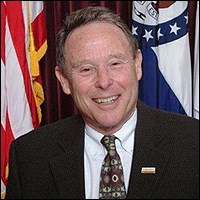
Darwin Hindman has been a lifelong campaigner for active living, recreational opportunities for all citizens, and walkable, bikeable communities.
As a citizen activist in the 1980s, he helped convince then-Missouri Governor John Ashcroft and the state legislature to convert an unused rail line into what is now one of the most recognizable and successful rail-trails in the country: the 237-mile Katy Trail State Park.
Hindman stated that having a father who was a professor of physical education instilled him with a belief in the importance of people being active and having recreation in their lives. However, as he grew older, he began to see that often we were not building our cities and communities to provide those opportunities.
Rather than bemoan this landscape, Hindman set his mind to change it. As a five-term mayor in his hometown of Columbia, Mo., he worked tirelessly to expand the city’s system of trails, bike lanes and parks. Hindman is credited with the construction of nearly 100 miles of side trails, pedways and bike paths that have made Columbia one of the most pedestrian-friendly cities in the nation.
He was also instrumental in securing a $25 million federal grant under the Nonmotorized Transportation Pilot Program—for which RTC was the lead advocate and helped administer—to help Columbia develop a multi-modal transportation system. As a result of Hindman’s efforts, Columbia is consistently rated one of America’s most livable communities.
Awards received by Hindman include a Leadership for Healthy Communities award, and the Lifetime Achievement Award from the League of American Bicyclists. In 2010, First Lady Michelle Obama recognized him for his efforts to build a bicycle-friendly community.
Edward and Hilda P. Jones
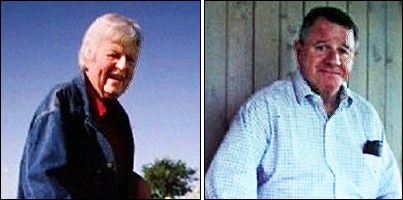
Edward and Hilda Jones, better known as Ted and Pat Jones, are recognized for their important contributions to Missouri’s Katy Trail State Park, which, since their purchase of the out-of-service Missouri-Kansas-Texas Railroad corridor in the late 1980s, has become one of the country’s signature—and indeed longest—rail-trails at 237 miles.
When an idea to recycle the once-dilapidated rail corridor for recreational purposes began to gain momentum, Ted and Pat helped make the enormous leap from grand vision to concrete reality. They bought 200 miles of the corridor’s right-of-way for $2.2 million and immediately donated it to the state to get the trail built.
In a profile in Rails to Trails magazine in 2007, Pat recalled some of the opposition trail supporters faced. “The big opposition was mainly a lot of noise,” she said. “Any change makes you worry. But a little sharing goes a long way.”
The change the Jones’ gift made possible includes introducing thousands of trail users each year to some of Missouri’s most spectacular natural areas, including the Missouri River and its entourage of hills and forested valleys—many of which retrace the footsteps of Lewis and Clark’s westward exploration.
The Katy Trail has also brought new life to more than 40 rural communities along its route, where antique stores, bed-and-breakfasts, restaurants and even wineries have sprouted up in the newly thriving region.
Since Ted passed away in 1990, Pat has continued to be a strong supporter of RTC. The Katy Trail is a legacy that speaks to the Jones’ generosity and their appreciation of Missouri’s vast beauty.
Carolyn Kane

Growing up on a farm in central Michigan in the 1940s and ‘50s, Carolyn Kane’s childhood seems like a slice of American life from another time. Dad worked in a factory in nearby Lansing, while Mom and Carolyn stayed home and milked the cows. Kane remembers that when she and Dale, the man who would become her husband, started dating, the young man often had to wait until the cows were milked and put away before Carolyn could go out for the evening.
Later, Kane enjoyed a long career with General Telephone and Electronics, which became Verizon. When she retired in 1993, however, Kane was introduced to a passion that would remain a steady thread throughout the next three decades of her life.
Combining her corporate experience with a love of the outdoors in her native state, Kane joined and soon became a key member of the Friends of Fred Meijer Heartland Trail. She served as the group’s secretary for 14 years, a role that included crucial relationship building with the Meijer Foundation, which funded the purchase of this former rail corridor for recreational purposes.
Kane went on to spearhead the acquisition and development of 37.5 miles of rail-trail from Ionia to Greenville, raising $2.3 million dollars in the process. This addition connected with two other rail-trails and completed a 125-mile rail-trail network through some of the state’s most scenic countryside.
She has also been a member of the Michigan Trails and Greenways Alliance Board since 2001 and was chair of the board from 2003 to 2008.
With three children, seven grandchildren and nine great-grandchildren, Kane still finds time to indulge in her other interests, including snowmobiling, motorcycling, camping and scrapbooking.
Fred Meijer

Fred Meijer’s name is synonymous with trails and parkland philanthropy in his native state of Michigan. Born in 1919 to Dutch immigrant parents, at the age of 14 Meijer helped his family launch the first-ever Meijer operation: a grocery store in the small city of Greenville. Meijer went on to build one of the most successful retail companies in America and one of the nation’s largest family-owned businesses.
During his life, Meijer had two philanthropic passions: the Frederik Meijer Gardens & Sculpture Park and rail-trails. In the early 1990s, he funded the purchase of the first rail-trail right-of-way in Michigan. That purchase became the Fred Meijer Heartland Trail, a 41-mile rail-trail that unlocks some of Michigan’s finest agricultural lands, woods, meadows, wetlands and small historical towns.
Meijer’s generous philanthropy joined with a dedicated and active citizens group to form a strong and ambitious trail community. The original Heartland Trail is now the centerpiece of the Fred Meijer trails network, which connects a number of rural and urban areas in the Lower Peninsula.
As evident as his generosity was Meijer’s pride in his native state and love for its open spaces. His belief in outdoor recreation as a key to satisfaction and happiness was at the core of his support of trails. “Ninety-five percent of folks live in the city,” he said, “and never get to experience the rural areas surrounding them.”
Thanks to the philanthropy and vision of Fred and his wife Lena, millions of Americans now have the opportunity to enjoy the respite that Michigan’s trails system offers. He also created the first endowment fund in Michigan for the maintenance of trails.
Meijer passed away in November 2011 at the age of 91.
Terry McGaughey
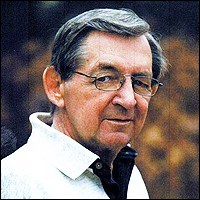
Terry McGaughey is being honored posthumously for the extraordinary dedication and vision he showed in bringing to fruition the now 121-mile Paul Bunyan State Trail in Minnesota. One of the country’s longest paved rail-rails, the Paul Bunyan succeeded in large part through the persistence, will and great passion of McGaughey, who is recognized by local trail supporters as the “Father” of this Hall of Fame rail-trail.
Since the first section opened in 1988, the Paul Bunyan State Trail has initiated a new sense of community and tourism on the edge of the Great Lakes region. The idea for the trail emerged in 1983 when the county lost its 90-year-old Burlington Northern rail service. McGaughey saw the potential of a trail along the corridor and committed himself to rallying local communities in support of the project.
He spent 25 years lobbying legislators, speaking in towns along the route and promoting the trail at every turn. When the state legislature authorized establishment of the trail, McGaughey served as the trail’s first volunteer coordinator. Today, McGaughey’s legacy continues to grow with the trail. The Paul Bunyan has become one of the most popular trails in the state and is enjoyed by hundreds of thousands of visitors each year.
When he passed away in his Brainerd home in 2010, a large community mourned the loss. The late Rep. James Oberstar, a biking enthusiast and trail advocate who had regularly ridden with McGaughey on the Paul Bunyan, described him as “a truly rare person who stood up to be counted and served his community any way he could.”
“The world is a better place for his having been here,” stated Oberstar.
In April 2010, McGaughey was honored with a lifetime achievement award from the Parks and Trails Council of Minnesota for his more than 25 years of supporting, lobbying and promoting the trail.
The Honorable James L. Oberstar
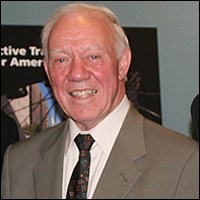
For more than 20 years, James Oberstar was RTC’s—and the rail-trail movement’s—foremost champion in the United States Congress, where he served from 1975 until 2011.
Born and raised in the small Minnesota community of Chisholm, Oberstar discovered a passion for cycling later in life as an activity that brought his family together in a way that was both healthy and enjoyable. His personal experience of the benefits of cycling led him to promote a number of legislative initiatives that would change the landscape of America’s cycling culture.
In 2003, Oberstar sponsored the groundbreaking Pedestrian and Cyclist’s Equity (PACE) Act, which called for existing transportation funds to be used to create environments that enabled walking and biking as a form of transportation and recreation. A number of PACE’s key initiatives eventually found their way into law through the federal transportation reauthorization, SAFETEA-LU, including funding for the Safe Routes to School Program and the pioneering $100 million federal Nonmotorized Transportation Pilot Program.
These achievements alone would cement Oberstar’s place as a champion of active transportation. But as chairman of the powerful House Transportation and Infrastructure Committee, Oberstar regularly advocated for converting the U.S.’s transportation system “from a hydrocarbon-based system to a carbohydrate-based system.”
He staunchly defended the threatened Transportation Enhancement program in 2003, telling his fellow members of Congress that “citizens have taken control of their destiny and the quality of life that they want to see in America. Enhancement programs make that possible.”
Oberstar passed away in his sleep in May 2014 at the age of 79.
“Mr. Oberstar advocated for cycling everywhere he went,” says Marianne Fowler, RTC’s senior strategist for policy advocacy. “He used his position in Congress to create and advance a multitude of vital programs. His legislative influence on the trails movement cannot be understated.”
Charles H. Montange

Few have been as vital to the enduring success of the rail-trail movement nationwide as Charles “Chuck” Montange.
Born in Kingsley, Iowa, Montange’s professional life as an attorney brought him to Washington, D.C., in 1976. Almost a decade later, David Burwell, then at the National Wildlife Federation (NWF), called Montange for assistance in preparing comments for NWF in connection with the Interstate Commerce Commission’s initial rulemaking to implement the railbanking statute.
It was a timely phone call and would prove to be one of the key moments in RTC history. Just the week before, Montange had pedaled the Cedar Valley Nature Trail. He had witnessed firsthand the potential of rail-trails and was eager to help.
The comments Montange put together helped in the formation of RTC and were instrumental to the success of countless rail-trail efforts nationwide. His understanding of railbanking and abandonment legislation, and ability to win key legal battles as a pro bono attorney representing RTC and other rail-trail advocates, were the catalyst for the formation of America’s best known and loved rail-trails, including D.C.’s Capital Crescent Trail, the Katy Trail State Park in Missouri, the Cowboy Trail in Nebraska and South Dakota’s George Mickelson Trail.
Montange now lives in Seattle, Wash., where he continues to work on behalf of rail-trails. Happily, he gets to enjoy his local rail-trail whenever he accompanies his wife on her daily bike commute to Children’s Hospital in Seattle.
The Honorable Ron Sims
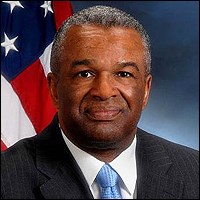
In his tenure as a councilmember and executive in King County, Wash., Ron Sims was heralded for his promotion of smart growth principals and a desire to combine urban development with the protection of environmental assets. During Sims’ 20 years as a leader in his community, King County developed a trails system among the best in the nation, with nearly 200 miles of trails, many of them rail-trails, and a bike and pedestrian system that continues to attract residents and big business.
Inspired by the example of Seattle’s famed Burke-Gilman Trail, Sims led the effort to bring the little-used Eastside Rail Corridor under public ownership for future conversion into a rail-trail. A trail along the Eastside corridor would pass through six suburban cities in King County and into the city of Snohomish—and would place a trail within a half-mile of 500,000 people.
A strong believer that trains and light-rail will play an important role in our transportation future, Sims has been a strong advocate for rail-with-trail projects.
“As active transportation advocates, robust regional trail systems that create seamless networks of accessible trails, sidewalks and on-road bike facilities is a goal that we can never lose sight of,” he told those assembled at RTC’s TrailLink Conference in 2007.
“These are crucial elements of any healthy and sustainable community. In 21st century urban America, our challenge is to make a transformation from rails-to-trails to rails-and-trails.”
Sims was named Leader of the Year by American City & County magazine in July 2008 and one of Governing magazine’s Government Officials of the Year in 2007.
In 2009, Sims was named Deputy Secretary of the U.S. Department of Housing and Urban Development, in recognition of his outstanding record in the promotion of smart growth, active transportation and the alleviation of homelessness. He stepped down from the position in 2011 in order to spend more time with his family.













